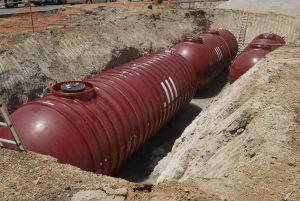Ground penetrating radar is the technology that professionals use for locating utility lines, including water, gas, or power lines. It’s a straightforward system and incredibly useful, but there are factors that can affect its performance. If you’re interested in learning more about GPR technology and how it works, check out these five factors that affect GPR.
The Weather
When radar touches ground holding moisture, the signal bounces back. Moisture raises the ground’s conductivity which can affect utility locating. This makes winter not ideal for locating because the excess moisture makes it difficult to read any data.
The Soil
Clay soil or silt aren’t great for reading GPR data. That’s because those types of soil are known for retaining moisture. Sandy soils, on the other hand, are incredibly favorable for scanning even though they are usually located next to bodies of water.
The Surface Area
If the terrain is rough enough, it can cause GPR equipment to separate from the surface by up to three inches. At that point, professionals will experience a lesser quality of data. GPR data reading works the best on flat, clear surfaces. It may be necessary to clear the surface area to ensure the best results.
Technological Limits
Metal is one of the most conductive materials, making it very easy to locate with GPR technology. Plastics and PVC, on the other hand, have no conductivity and are therefore, much more difficult to locate. Items or lines that are too small are also difficult to pick up on the radar. Another limitation is the antenna. If the object is too deep beneath the surface, it could surpass the limit of the antenna’s capability.
Radar Frequency
High frequencies work the best in tighter, shallow areas while low frequencies work well with penetration and large objects. Lower frequencies are what professionals use for utility locating.
GPR Services from Concrete Visions
Concrete Visions has over 12 years of experience and expertise in concrete scanning and we know how to detect any problems lurking beneath the surface. We use ground penetrating radar accurately and expertly and are familiar with many other methods that can be used when appropriate like concrete x-ray and electromagnetic conductivity. We are also very familiar with the latest construction safety techniques and train all of our workers to do their work quickly, accurately, and safely. If you would like to learn more about how we can help you, give us a call at (410) 766-2210 or visit us online. For more articles and tips, follow us on Facebook, Twitter, LinkedIn, and Google+.

